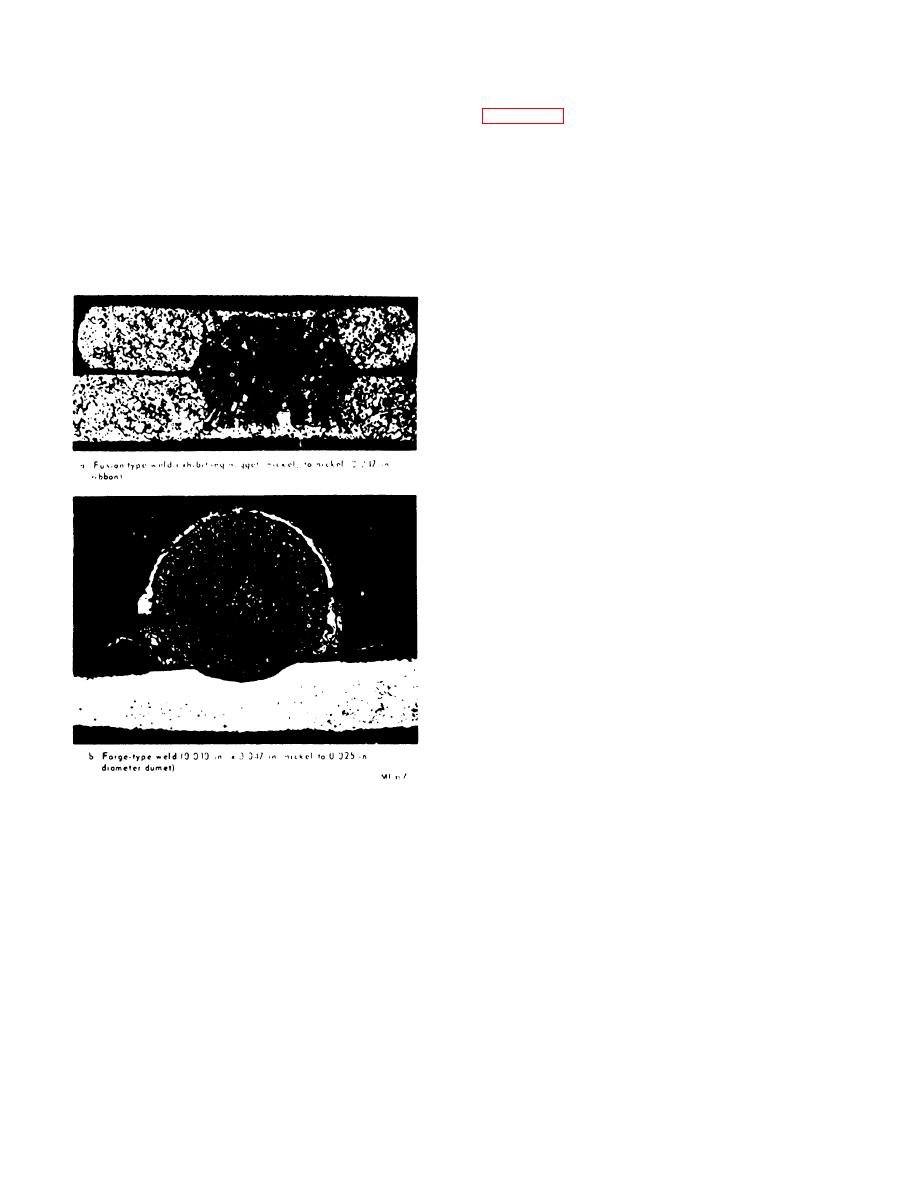 |
|||
|
|
|||
|
|
|||
| ||||||||||
|
|
 TM 750-245-4
8-2. Joining Mechanism
a. The joining mechanism of welding may be
b. Fusion occurs when the temperature is great
classified as being either a fusion or a forging action.
enough to cause melting of the weld materials at the
The fundamental difference between the two
point of interface. The molten materials are confined
mechanisms is the temperature at which the joining
within the weld materials and, upon cooling, solidity to a
weld occurs. The heat generated is a function of the
cast structure, termed a "nugget," which binds the
thermal and electrical characteristics of the materials to
materials together. Lighter metals and materials such
be welded. These characteristics govern which joining
as iron, steel, and nickel exhibit this type of weld.
mechanism takes place.
c. The forge weld is basically a solid state one.
The temperature reached is not high enough to cause
melting but high enough to cause the materials to reach
a plastic state. The pressure exerted by the electrodes
forces the materials into intimate contact, and the
proximity of the atoms of the two materials at the
interface causes a solid state bond. There is no
evidence of a nugget in the forge process., Copper and
other metals possessing low resistivity and high thermal
conductivity are joined by this type of weld, since it is
difficult to localize the heat of the interface.
8-3. Preparation of Metal for Welding
a. The properties of a welded joint depend partly
on the correct preparation of the edges being welded.
All scale, rust, oxides, and other impurities must be
removed from the joint edges or surfaces to prevent
their inclusion in the weld metal. Edges should be
prepared to permit fusion without excessive melting.
Care should be taken to keep to a minimum the heat
loss due to radiation into the base metal from the weld.
Properly prepared joints will give a minimum of
expansion on heating and contraction on cooling.
b. The preparation of the metal for welding is
governed by form, thickness, kind of metal, the load
which the weld will be required to support, and the
available means for preparing the edges to be joined.
Figure 8-2. Basic types of welds.
Section II. TYPES OF WELDS AND PROCESSES
electrodes. Welds are made with or without application
8-4. General
of pressure and with or without filler metals.
This section is included so that you may become
familiar with all types of welds and their processes. he
a. Metal Electrodes.
more knowledge you possess, the better qualified you
(1) Bare metal arc welding. The arc is drawn
will be to inspect.
between a bare or lightly coated electrode and the
workpiece. Filler metal is obtained from the electrode
8-5. Arc Welding
and neither shielding nor pressure are used.
In this process, the weld is produced by the extreme
(2) Stud welding. The arc is drawn between a
heat of an electric arc drawn between an electrode and
metal stud and the workpiece. The molten surfaces to
the workpiece, or in some cases, between two
8-2
|
|
Privacy Statement - Press Release - Copyright Information. - Contact Us |